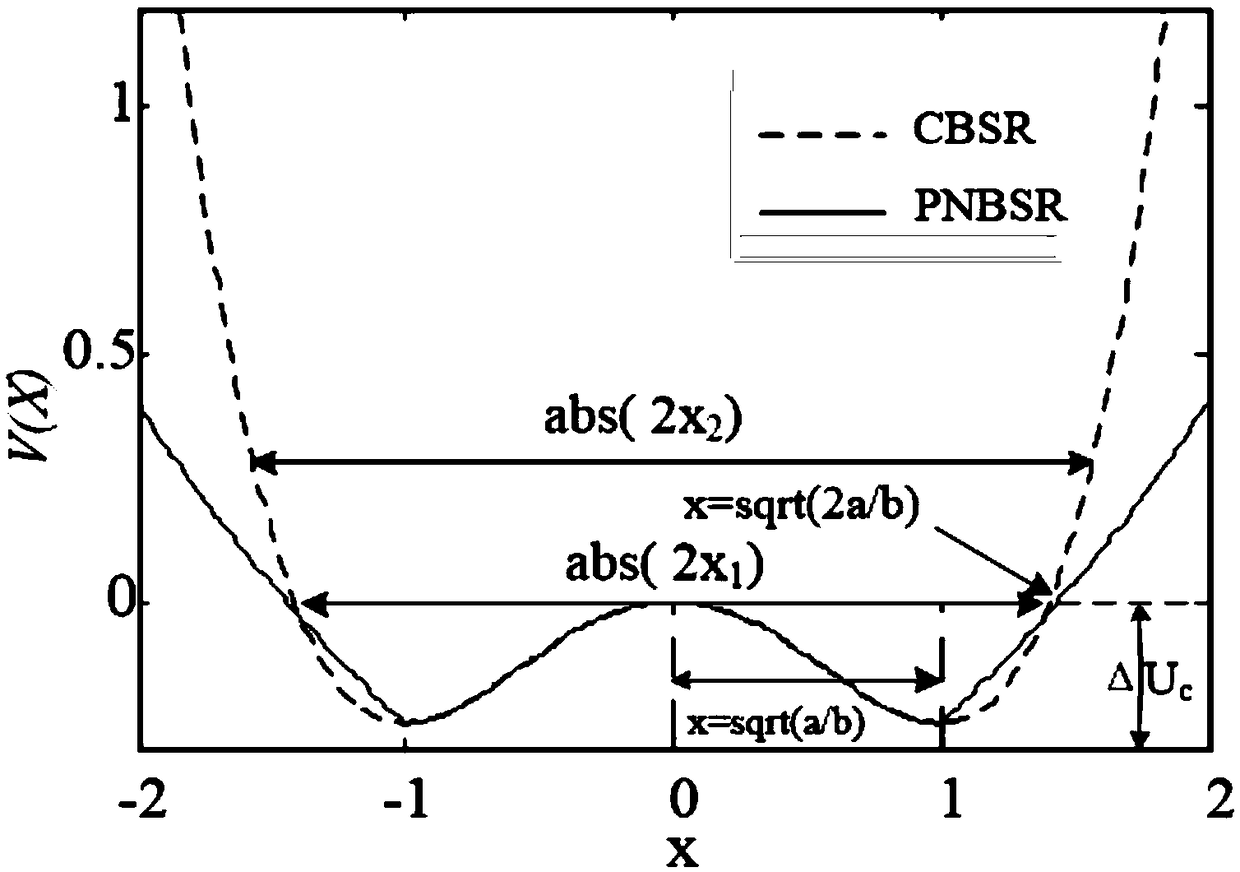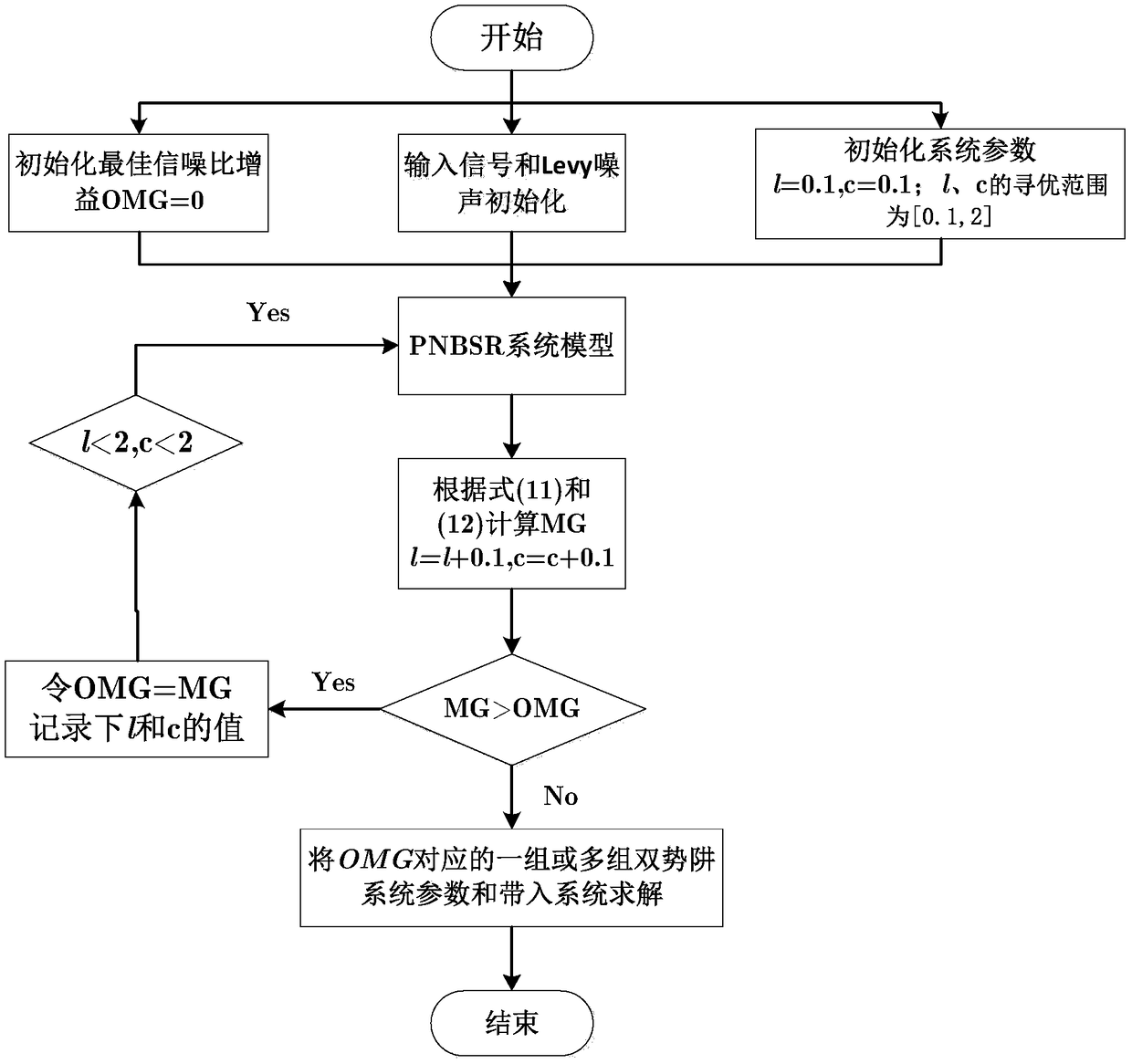A weak signal detection method for piecewise nonlinear bistable systems
A non-linear bistable and weak signal detection technology, applied in the field of signal processing, can solve the problems of reducing signal enhancement ability and limiting detection ability
- Summary
- Abstract
- Description
- Claims
- Application Information
AI Technical Summary
Problems solved by technology
Method used
Image
Examples
Embodiment Construction
[0014] The implementation of the present invention will be further described below with reference to the drawings and specific examples.
[0015] Step 1: Under the co-drive of the weak periodic signal and Levy noise, the over-damped nonlinear system model ignoring the inertia term can be described as:
[0016]
[0017] Where A is the amplitude of the weak periodic signal, f is the characteristic frequency of the weak periodic signal to be measured, V(x) is the potential function of the PNBSR system, D is the noise intensity coefficient, and ξ(t) is the non-Gaussian Levy noise
[0018] It can be known from the existing literature that the output saturation of the CBSR system greatly limits the signal enhancement and detection capabilities. We can see that the potential function expression of the CBSR system is V(x)=-a c x 2 / 2+b c x 4 / 4, its potential well point The barrier height is ΔV=a c 2 / (4b c ), and the base height is x b = 0, for a more convenient comparative analysis, make t...
PUM
 Login to View More
Login to View More Abstract
Description
Claims
Application Information
 Login to View More
Login to View More - R&D
- Intellectual Property
- Life Sciences
- Materials
- Tech Scout
- Unparalleled Data Quality
- Higher Quality Content
- 60% Fewer Hallucinations
Browse by: Latest US Patents, China's latest patents, Technical Efficacy Thesaurus, Application Domain, Technology Topic, Popular Technical Reports.
© 2025 PatSnap. All rights reserved.Legal|Privacy policy|Modern Slavery Act Transparency Statement|Sitemap|About US| Contact US: help@patsnap.com



